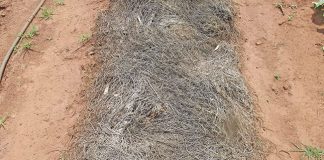According to the article, the town of Hope, Arkansas, in the US, is where it all happens when it comes to watermelons. It’s here that Dr Terry Kirkpatrick of the plant pathology department at the University of Arkansas spends a good deal of his time popping open watermelons growing in his experimental fields. He’s searching for deeply coloured flesh that’s crisp, but not crunchy, and so juicy that pools fill the divots left by a spoon.
A good watermelon also has to ship well, which means a thick rind and a uniform shape. And it must be small enough so people pushing trolleys in a supermarket will buy it. It can’t have seeds either. All these are the characteristics of his small “hybrid triploid” beauties. Although the old-fashioned seeded varieties (that often weigh in at over 30kg) are still popular with some people, they only account for two out of 10 watermelon sales in the US. The prediction is that the “personal” or “icebox” melon – a round ball of sweetness without seeds and, some say, without character – is the future.
The watermelon revolution
At this stage, personal melons account for about 12% of retail sales. But Dr Kirkpatrick says urbanites prefer these smaller, “cute melons” (as they’re also known), because “with big ones you fill all your tupperware containers and you’re still not done”.For farmers much of the appeal of smaller varieties is simple economics, he notes. Plant big watermelons and you might get about 88t/ha. Personal melons will give you double that amount.
Then there are what the Yanks call the “heirloom varieties”, like Moon and Stars. These are larger with a deep-green rind stippled with what looks like blotches of paint. No wonder consumers’ buying decisions are influenced by what they see when it comes to fresh produce!
The traditional, large watermelons are steadily losing market share. Hope is said to be home to the world’s largest watermelons – but whether that’s the “American world” or the world as we know it is anyone’s guess. Lloyd Bright claims to hold the record with a whopper weighing in at around 122kg! He could be part of a dying breed, though. As one grower put it, “I don’t do giant watermelons any more”.












